Macro
Sedum Bumbler
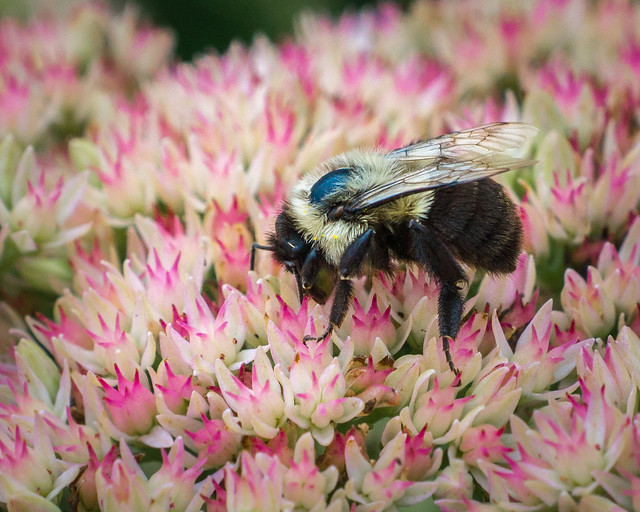
This time of year, the pollinators are busy in my wife’s flower beds. This is a bumble bee browsing through the sedum flowers.
This is a comparatively small image because I cropped in, to enlarge the bee to a size where you can see some of the detail. I don’t own a true “macro” lens, so I make my 16-55mm lens do the heavy lifting.
The image is larger than you can see on this page, but if you click the photo a larger version will open in a new browser tab to give you more detail.
All of the photos I post are available for purchase. If you’d like to buy one, click on the blue “Buy this Online” bar below for a variety of print and frame options or contact me for digital purchase and licensing options.
Bride and Bridesmaids
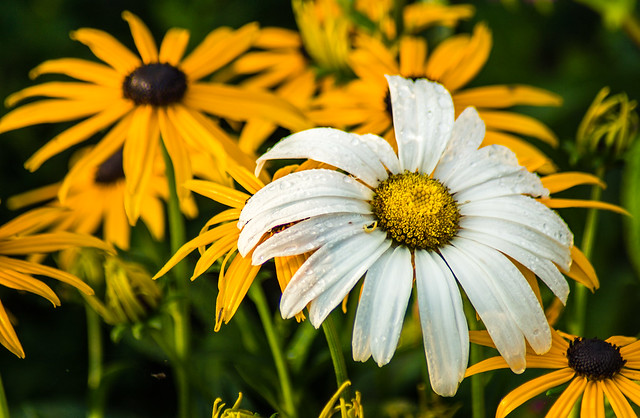
Sometimes, it’s the simple beauty that most easily captures me. Pleasing colors. Interesting shapes. A bit of texture. Uncommon perspective.
I found this collection of flowers while on another photographic mission. I was out early one morning to snap some photos of a couple of tall ships that were docked in the Kewaunee harbor. I parked my car in a lot near by and started working. At some point, I looked back and noticed a beautiful flower garden surrounding a nearby home. These flowers – the white one, in particular – immediately caught my eye.
I took quite a few photos of the ships, but this one may be my favorite of the morning.
You can see a much larger version of this image by clicking on it. When you do, another browser tab will open.
All of the photos I post are available for purchase. If you’d like to buy one, click on the blue “Buy this Online” bar below for a variety of print and frame options or contact me for digital purchase and licensing options.
Mesmerizing
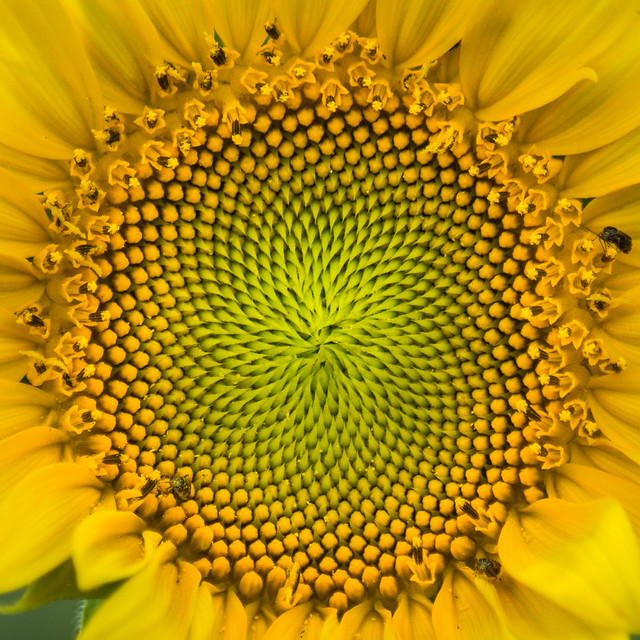
In think, one of the coolest thing about sunflowers, is the intricate pattern of the seeds as they develop. If you stare at the center of the flower for awhile, it can be mesmerizing. (Well, at least for me.)
This particular bloom was photographed at a farm field a short distance from our home in rural Kewaunee County, Wisconsin. I’ll have to post more images from this shoot in the near future.
All of the photos I post are available for purchase. If you’d like to buy one, click on the blue “Buy this Online” bar below for a variety of print and frame options or contact me for digital purchase and licensing options.
Tree Hugger
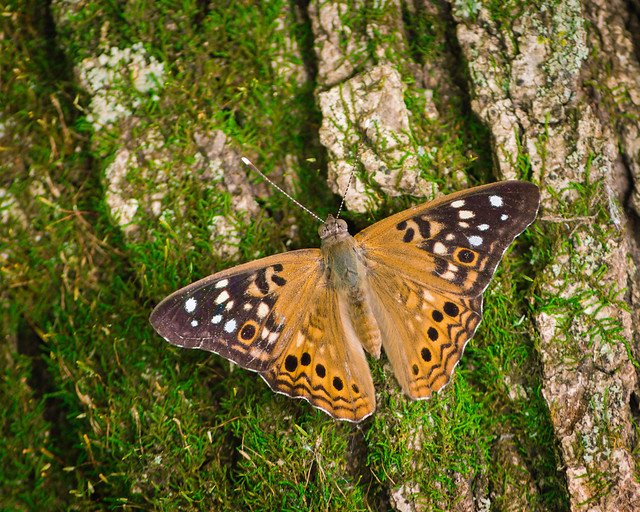
I love macro photography because it brings things that are small, and often missed, closeup and in sharp focus. It reveals the detail that we rarely have the opportunity to observe and enjoy.
This small butterfly was one of several I found mingling around the base of a tree in the woods of Missouri. It seemed like a gathering of old friends. Unfortunately, I was’t able to get a good shot of the group’s activity because, at the base of the tree, there was a good deal of tall grass that shielded my view. This momentary loner was kind enough to sit still long enough for me to snap its image. An online friend helped me identify this as a Hackberry Emperor butterfly.
By the way, the image you see here was flipped 180-degrees. When I snapped it, the butterfly was facing downward. I thought it seemed more natural and a little easier on the eyes to have it positioned upward.
There is much more detail to be seen in the larger version. To see it, simply click on the photo.
All of the photos I post are available for purchase. If you’d like to buy one, click on the blue “Buy this Online” bar below for a variety of print and frame options or contact me for digital purchase and licensing options.
Hello Wild Yellow
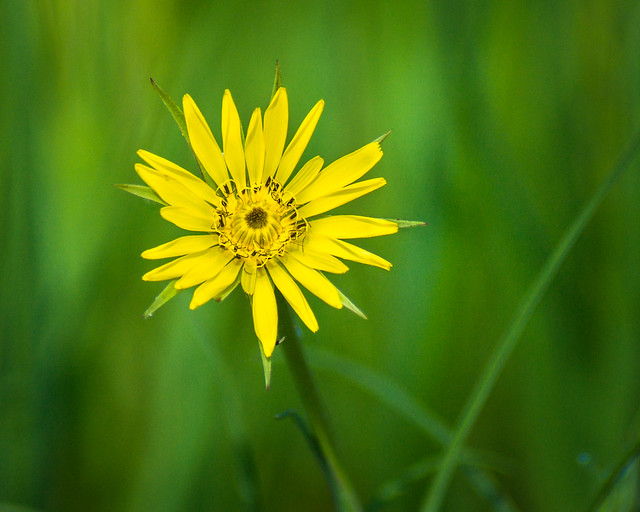 This yellow wildflower found a place in a woodland clearing to enjoy the warm, afternoon sun.
This yellow wildflower found a place in a woodland clearing to enjoy the warm, afternoon sun.
I usually try to offer some info on the flowers I post – at least the name of the flower. In this case, I don’t know what this one is called. I spent a good deal of time searching the web and a wildflower field guide but couldn’t come up with a good match. If you know, definitively, what this flower is, let me know. I photographed this bloom on a trail in northeast Wisconsin.
Update: With the help of some online friends I’ve discovered this flower is known locally as Goat’s Beard. Wikipedia also lists a variety of other names that are used for this plant…Tragopogon dubius, yellow salsify, western salsify, western goat’s-beard, wild oysterplant, yellow goat’s beard, common salsify and salsify.
You can get a larger, more detailed view of this flower by clicking on the photo.
All of the photos I post are available for purchase. If you’d like to buy one, click on the blue “Buy this Online” bar below for a variety of print and frame options or contact me for digital purchase and licensing options.
Dark Damsel
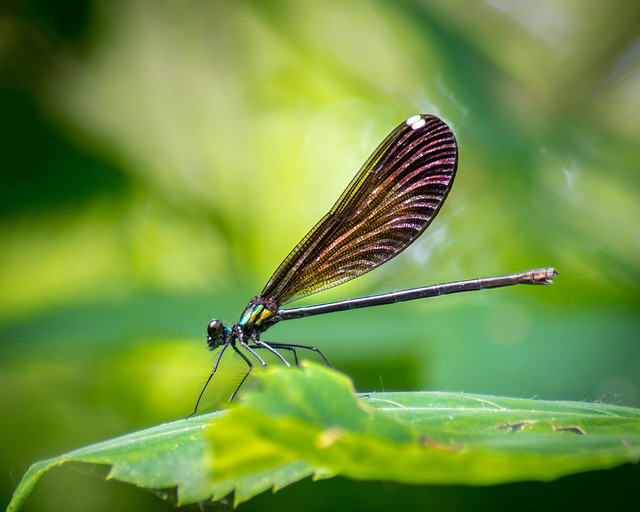
The dainty damselfly is a predator by nature. Damselflies catch and eat flies, mosquitoes, and other small insects. Often they hover among grasses and low vegetation, picking prey off stems and leaves with their spiny legs.
I think the best part of this image is the detailed pattern and color in the wings. I also like the tiny spines on the legs.
This dark damsel paused just long enough for me to catch a good photo. They tend to zip to and fro and make focusing a challenge. I saw this one on a walk through some woods in Missouri. I had to shoot through the leaves to grab this image. I would have preferred the leaf in the foreground wasn’t there so you could see the structure of all the legs, but sometimes you have to take what you can get.
To enjoy the details available in this image, click on the photo and a full-screen version will open in a new browser tab.
All of the photos I post are available for purchase. If you’d like to buy one, click on the blue “Buy this Online” bar below for a variety of print and frame options or contact me for digital purchase and licensing options.
Gold In the Marsh
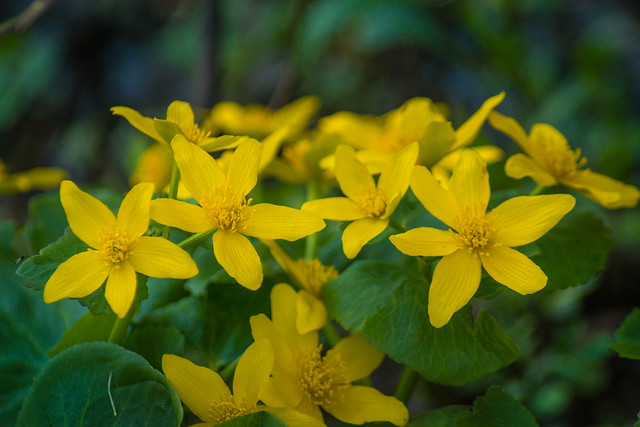
These yellow wildflowers are known locally as Marsh Marigolds. They can be found in ditches, wet woodlands and marshes. We found these…and a whole bunch more…in some soggy areas in the woodlands of northeast Wisconsin.
As I mentioned, we call them marsh marigolds in this area. Their botanical name is caltha palustris but they are known by a unbelievable variety of other names around the world. According to Wikipedia, the second most common name is kingcup. After that, they are also called brave bassinets, crazy Beth, horse blob, May blob, mare blob, boots, water boots, meadow-bright, bullflower, meadow buttercup, water buttercup, soldier’s buttons, meadow cowslip, water cowslip, publican’s cloak, crowfoot, water dragon, drunkards, water goggles, meadow gowan, water gowan, yellow gowan, goldes, golds, goldings, gools, cow lily, marybuds, and publicans-and-sinners. The common name “marigold” refers to its use in medieval churches at Easter as a tribute to the Virgin Mary, as in “Mary gold”.
All of the photos I post are available for purchase. If you’d like to buy one, click on the blue “Buy this Online” bar below for a variety of print and frame options or contact me for digital purchase and licensing options.
Interloper
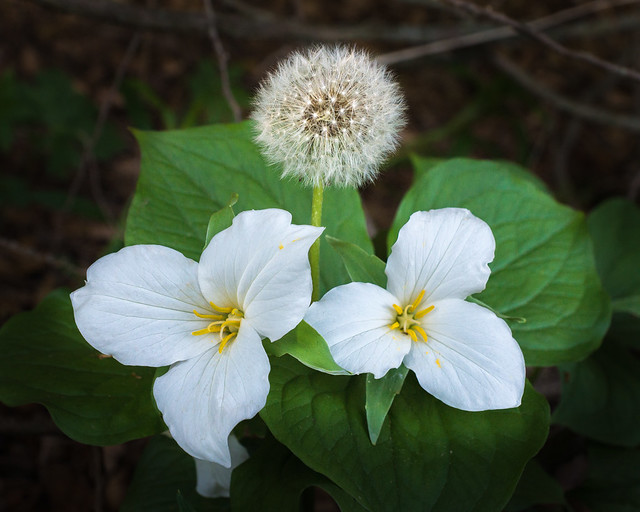
in·ter·lop·er
The dandelion is clearly the interloper here, inserting itself among the trilliums. These wildflowers were photographed on a recent hike in the woodlands of northeast Wisconsin.
I tried to capture the purity and details in the petals of the trillium blooms. The dandelion seemed to be photobombing. If you look closely, I think you can see a sly smirk on the dandelion’s face.
In any case, you can see all of the detail better by viewing the larger version. To do that, simply click on the photo.
All of the photos I post are available for purchase. If you’d like to buy one, click on the blue “Buy this Online” bar below for a variety of print and frame options or contact me for digital purchase and licensing options.
Heart On A String
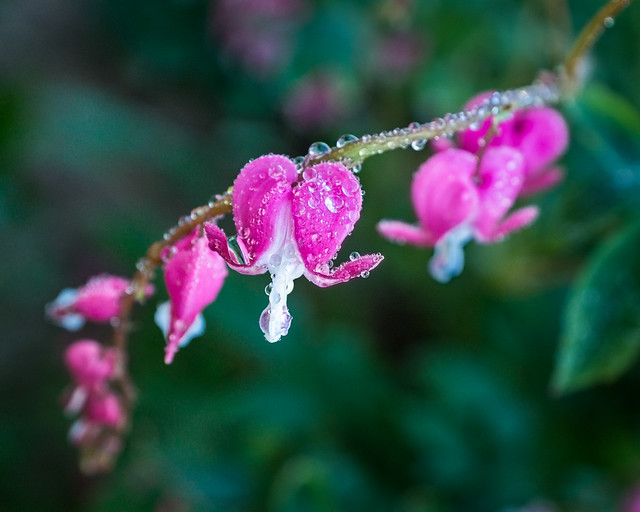
One of the most unique of flowers, this is the bleeding heart. It’s sparkling with moisture from a springtime rain.
The bleeding heart plant (lamprocapnos spectabilis) is native to China, Korea, Japan and Siberia. I was surprised to find out it is in the poppy family. It was brought to the west in the 1840s by the famed Scottish plant hunter, botanist Robert Fortune. It is prized by gardeners for its heart-shaped pink and white flowers that bloom in spring and early summer.
You can view a larger, more detailed version of this image by clicking on the photo.
All of the photos I post are available for purchase. If you’d like to buy one, click on the blue “Buy this Online” bar below for a variety of print and frame options or contact me for digital purchase and licensing options.
Wild Geranium Family Portrait
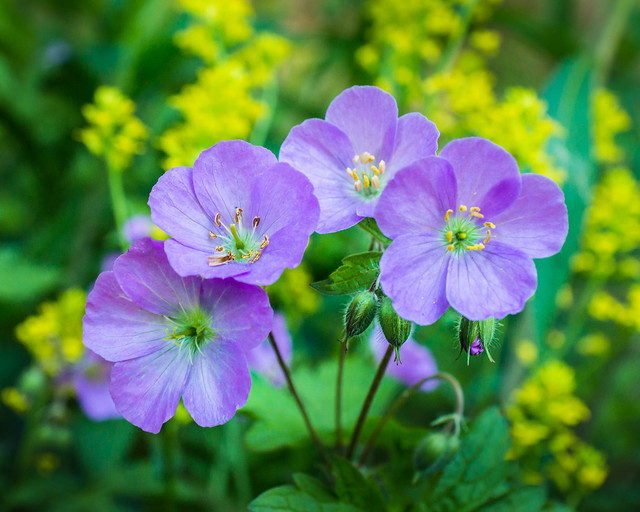
On a recent woodland hike I found this nice grouping of Wild Geraniums. It reminded me of a family portrait…parents and children…including little buds.
In the interest of full disclosure, I altered the background. There were some small, yellow wildflowers (weeds) growing a few feet away. I snapped off a stem of them and placed it behind my subjects to add a little more color and variety to the image.
As I often remind people, I operate as an artist not a photo journalist. Most images I post are true to the original scene. However, on occasion, I may add or subtract elements to suit my artistic vision. Most times, it’s done digitally. In this case, a little impromptu, on-site, floral arrangement.
You can get a better view by clicking on the photo. That will open a full-screen version in a new browser tab.
All of the photos I post are available for purchase. If you’d like to buy one, click on the blue “Buy this Online” bar below for a variety of print and frame options or contact me for digital purchase and licensing options.


















































